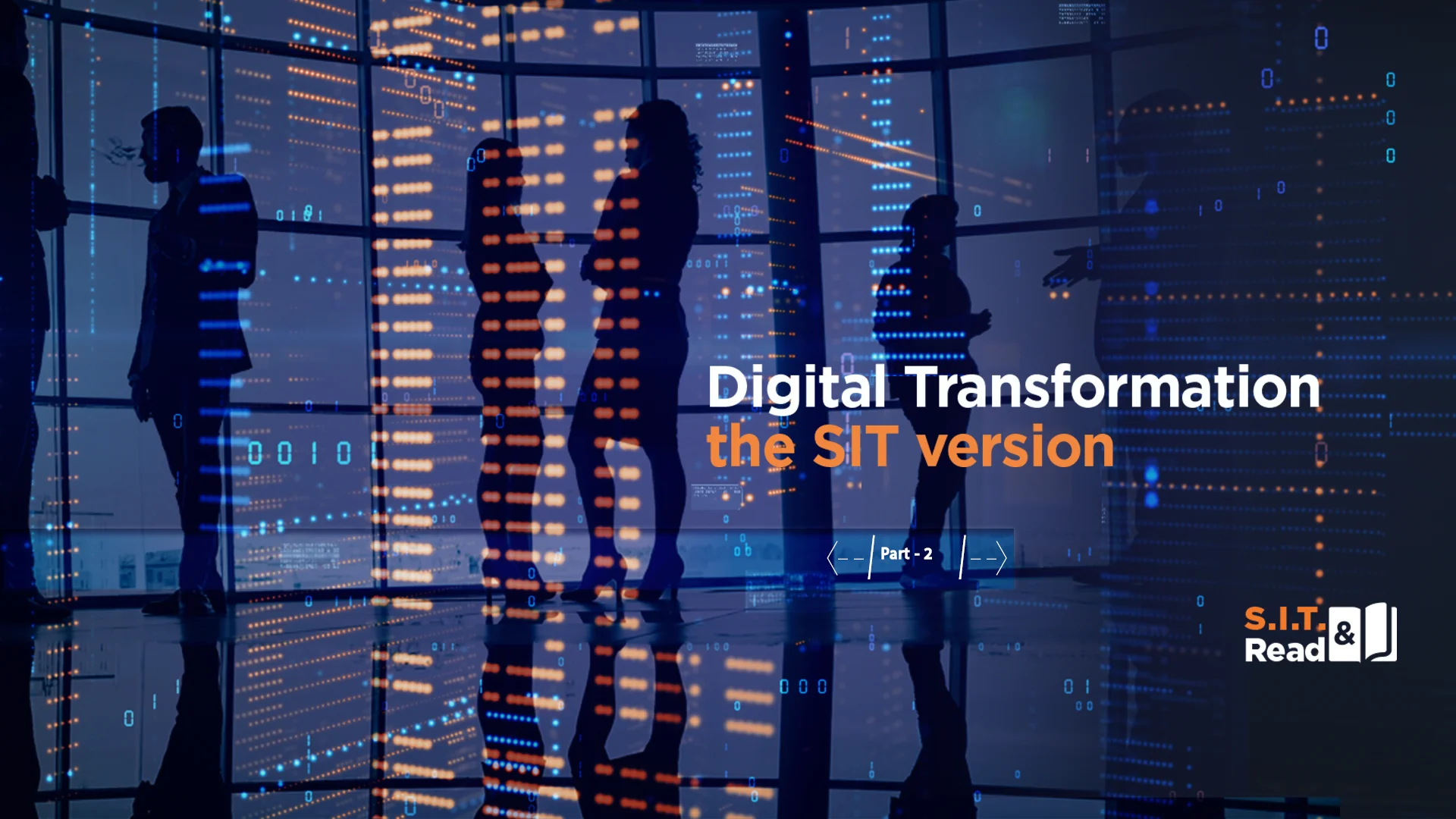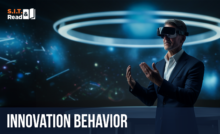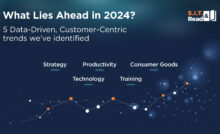Digital Transformation – the SIT version – part 2


In our first post on the difficulties faced by organizations attempting Digital Transformation, we shared a few sentences about each of 4 common barriers:
1. It is truly difficult to trust experts on DT, especially the “experts”.
2. Mixed signals from top management.
3. Security concerns (real and imagined).
4. Ignorance of relevant technologies.
Here are 6 more, completing our not-comprehensive list of 10 Common Barriers to Digital Transformation:
5
Regular resistance to Innovation, probably amplified. In other posts you are welcome to read about some of the multiple types of resistance that people exhibit towards any kind of innovation. They all apply to Digital Transformation, just as they do to any attempt to change processes and habits, in general. But it seems that for many people innovation of the digital ilk can be even more frightening than other variants, maybe due to the fact that many of us feel threatened anyway by what feels like a digital invasion in all walks of life. We are bombarded with digital information, we fight with our children about what seems to be their excessive immersion in the digital sphere, we read of, and sometimes experience the imminent dangers and ethical dilemmas of an increasingly digitalized existence. DT at work therefore seems to be yet another front in a losing battle.
6
Problems related to interfacing with existing IT technologies and organization (real and imagined). Most companies striving for DT do not attempt to jump directly from the Stone Age into digital. Most, or even all, have legacy IT systems and whatever new elements will be introduced will necessarily have to fit in with existing infrastructure, hardware and software. This implies: a) a need to allocate additional budget (good for IT, less attractive for Finance); b) a threat to the professional authority of current internal IT experts; c) bugs and clashes between old and new systems; d) an opportunity for renewing aging systems, which creates a dilemma of how far back to go with replacement, versus adding new technologies on top of existing ones. These dilemmas can paralyze the entire DT initiative.
7
Lack of clear ownership: regular business owner versus IT/tech lead, versus owner of “Digital” if there is one. In one organization you see a digital expert brought in and put in charge of “Innovation” without any knowledge or previous experience in the latter, while in another an innovation expert is assigned the responsibility for a “Digital Transformation” project she has no ability to lead. In both cases the reasons for the decision are an attempt at efficiency (“can’t waste two headcounts on the fluffy stuff”) and a foggy understanding of the differences and interconnections between the two topics (“he’s an expert on digital, that’s what innovation is all about” or “she’s an innovation expert, she can cover the digital transformation part”). IT will also be angling for a position at the DT table (“it’s all about IT, the systems we’re in charge of”), and HR wants their voice to be heard (“it will all depend on the people we hire and on upskilling digital capabilities”). They are all obviously right, often leaving the organization without a clear leader for DT, or worse, with several.
8
Lack of structured data to start building on. Imagine my surprise when the VP IT (and responsible for her organization’s DT initiative) of a leading HMO in the US confided in me that, while they are truly committed to a genuine DT process, she expects the interesting steps to kick-off at best only within a couple of years since they are currently grappling with the uninspiring task of converting their (literally) millions of medical records into digital format. Even technologically oriented companies tend to have a huge installed base of “dumb devices” that were never designed to collect data, or minimally so, or produce unstructured and difficult to use data. This lack of accessible data often makes it difficult to even imagine digital offerings (the “what”) let alone how developers should go about tackling the challenge (the “how”).
9
“Digital” is seen as an add-on, or a translation process to be applied to products and offerings. In 2004 we worked with a large publisher whose management had the foresight and courage to push strongly for “more digital”, quite a while before this had become the ubiquitous trend it is today. But, alas, their strategy was to create a Digital Team that received all the analog materials at the end of their development process to “convert them into digital”. Surprisingly, even today this is still common practice in many companies, where digital is seen as a kind of different language to which specifically trained experts will translate the regular (analog) products, processes, systems, or communications. First, this approach dramatically limits the potential benefits of DT, since you can only translate into digital what you were able to imagine in the analog world, rather than creating and inventing using digital possibilities built into the process. Second, the approach often creates inferior results since many analog-conceived concepts do not translate well into digi-speak.
10
Timelines and pace: development cycles do not fit the rhythm of change in digital technologies, nor the pace of change in customers’ preferences and habits. Most companies have a single well-structured R&D process, if at all. When they engage in the development of digital offerings, or introduce digital elements in their regular development, they often tend to utilize their existing development process, stage gate structure or other process management and control mechanisms. Even organizations that adopt Lean Startup or other agile methods often embed them into their overall approach due to lack of understanding at top management levels that the rules of the game are different in a digital context.
We’ve seen, therefore, that there are (at least) 10 barriers and stumbling blocks to a successful Digital Transformation. Luckily, we have developed a special pixy dust that can be sprinkled on databases and clouds to…. OK, just kidding. But in consequent posts we will share some thoughts and guidelines that are useful when engaging in this challenging task.
Recent Posts
Innovation Behavior
Innovation is a skill, not a gift. Top organizations drive growth by nurturing and investing…
Should you learn TRIZ? – Yes. ….and No.
Are you in the world of problem solving? Is problem solving a skillset you have…
What Lies Ahead in 2024?
5 Data-Driven, Customer-Centric trends we’ve identified This is not just another conventional forecast. Over nearly…
Fork or Chopsticks – Which Innovation Tools Do You Use?
Imagine a chef, who only uses a spoon. Imagine a dentist, who only uses a…
The Moat Mentality: Exploring New Frontiers in Innovation Methodologies
In investing and business strategy, we often speak in terms of moats. Warren Edward Buffett…
Was it a Breakthrough or an Adjacency?
This year, P&G’s Febreze celebrates its silver anniversary as a brand. But not all 25…


